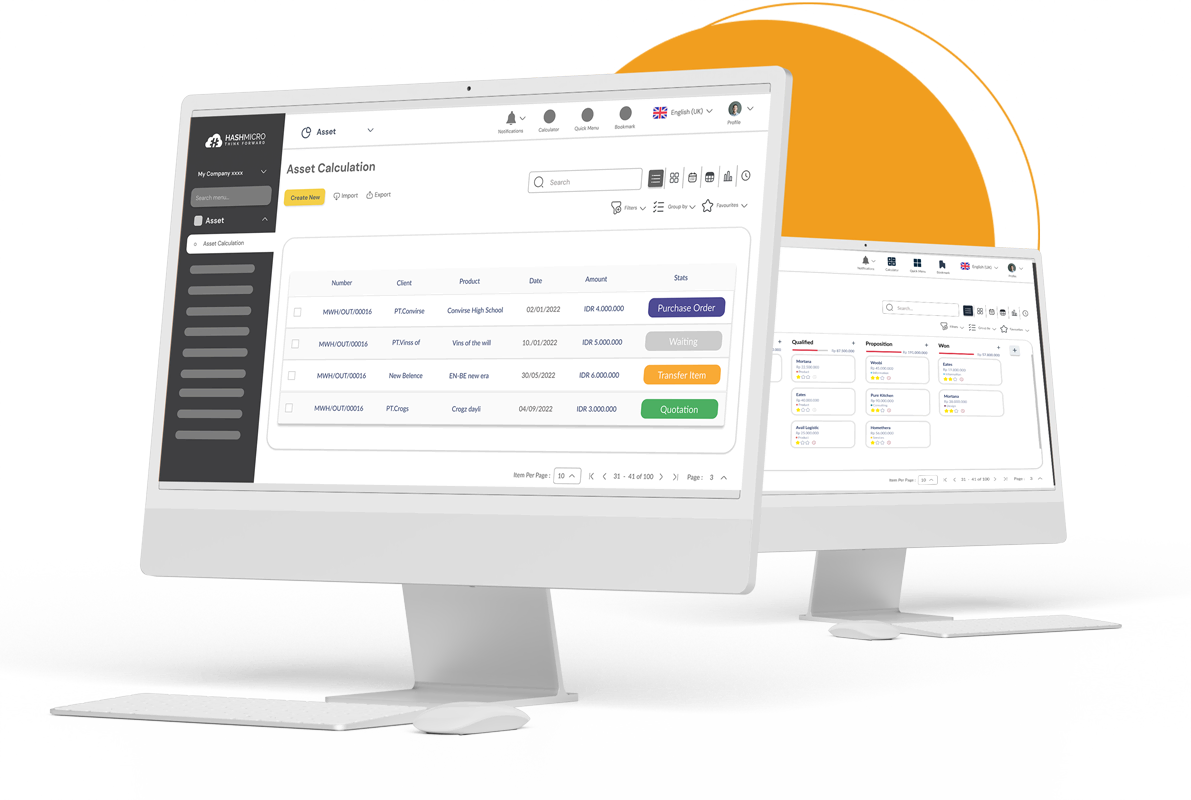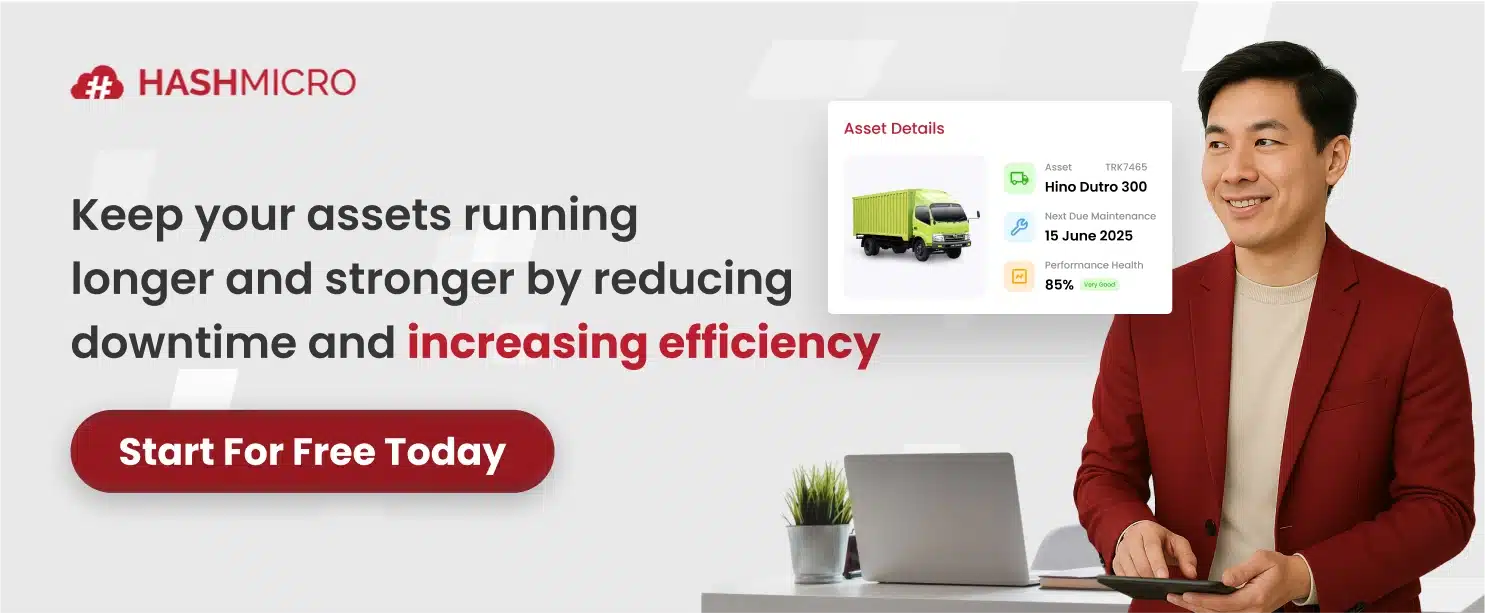As someone with decision-making power in a Singaporean business, you must be acutely aware of the challenges posed by maintaining operational efficiency while keeping costs in check.
Unexpected equipment failures and unplanned downtime can cripple your operations, leading to significant financial losses and tarnished reputation. This is where the importance of a robust asset management strategy comes into play.
Imagine a solution that not only helps you keep track of your assets but also ensures they are always in peak condition, thus preventing costly breakdowns and inefficiencies.
Enter the Computerized Maintenance Management System (CMMS), a powerful tool designed to streamline your maintenance processes, extend the lifespan of your assets, and ultimately boost your bottom line.
According to research that was published in IntechOpen, implementing a CMMS can increase productivity by 50%, reduce equipment downtime, and enhance overall productivity.
In this article, we will explore the myriad benefits of CMMS, compare it with Enterprise Asset Management (EAM) systems, and guide you in selecting the right system to meet your business needs.
Key Takeaways
|
What is a CMMS?
A Computerized Maintenance Management System (CMMS) is an advanced software solution that helps organizations plan, track, and optimize maintenance activities. It centralizes maintenance tasks, schedules, and workflows, ensuring assets are properly maintained and operational downtime is minimized.
By automating scheduling and tracking, a CMMS provides real-time visibility into maintenance activities, reducing manual processes and human error.
Leveraging CMMS software streamlines maintenance processes enhances productivity, and extends asset lifespan. The system ensures timely and efficient maintenance, leading to fewer unexpected breakdowns and minimizing operational disruptions.
With detailed maintenance histories and performance metrics, a CMMS helps organizations make informed decisions, ultimately improving asset reliability and maximizing return on investment.
Benefits of Using a Computerized Maintenance Management System
Implementing a CMMS offers numerous benefits that can significantly enhance your maintenance operations. Among these advantages, improved asset management stands out as a key benefit. Let’s explore how CMMS systems provide a comprehensive view of all assets, enabling better tracking and management.
Real-time monitoring and control
CMMS systems provide a comprehensive view of all assets, allowing for better tracking and management. This ensures that assets are maintained in optimal condition, reducing the likelihood of unexpected failures and extending their useful life. By enabling real-time monitoring and control, CMMS enhances visibility into asset health and performance.
Automation and streamlined processes
With a CMMS, maintenance tasks are automated and streamlined. This reduces the time and effort required for manual tracking and scheduling, allowing maintenance teams to focus on more critical tasks. Automation minimizes human error and ensures that maintenance activities are performed efficiently and on time.
Preventing equipment breakdowns
By optimizing maintenance schedules and improving asset reliability, a CMMS can significantly reduce maintenance costs. It helps prevent costly breakdowns and extends the life of expensive equipment. Predictive maintenance features further enhance cost savings by addressing potential issues before they lead to major repairs.
Detailed maintenance records
Many industries are subject to strict regulatory requirements regarding asset maintenance. A CMMS helps ensure compliance by providing detailed records of maintenance activities, inspections, and repairs. These records facilitate easy auditing and help maintain adherence to industry standards and regulations.
Data-driven decision-making with advanced analytics
CMMS systems collect and analyze data on asset performance and maintenance activities. This data can be used to identify trends, predict failures, and make informed decisions about maintenance strategies and asset investments. Advanced analytics capabilities enable proactive management and continuous improvement of maintenance operations.
CMMS vs. EAM: What’s the Difference?
While both CMMS and Enterprise Asset Management (EAM) systems are used for asset management, there are key differences between the two. A CMMS is primarily focused on maintenance management, providing tools to schedule, track, and optimize maintenance activities.
In contrast, an EAM system offers a broader range of functionality, including asset lifecycle management, procurement, and financial management. EAM systems are ideal for organizations with complex asset management needs, such as those with large and diverse asset portfolios.
However, for many businesses, a CMMS provides the essential features needed to effectively manage maintenance activities and improve asset performance.
ERP vs. CMMS: Which One Do You Need?
Enterprise Resource Planning (ERP) systems and CMMS are both integral to asset management, but they serve different functions. An ERP system is a comprehensive business management software that integrates various functions. Features such as finance, human resources, supply chain, and more are included in the best ERP software.
ERP provides a holistic view of the organization’s operations. On the other hand, a CMMS specializes in maintenance management, focusing on scheduling, tracking, and optimizing maintenance tasks.
While ERP systems offer a wide array of functionalities, they may not provide the depth of maintenance management features that a CMMS offers. Integrating a CMMS with an ERP system can provide a more robust solution, combining the broad operational insights of an ERP with the detailed maintenance capabilities of a CMMS.
Things to Consider in Choosing the Right CMMS
To choose the best CMMS software for your business, there are several factors that you need to consider before contacting and implementing this asset management software, those are:
Functionality
Ensure the CMMS offers the features you need, such as work order management, preventive maintenance scheduling, and inventory management. Additionally, consider functionalities like comprehensive asset cost reporting, maintenance budget management, and real-time GPS tracking for enhanced asset visibility.
Ease of use
The system should be user-friendly and easy to implement. Look for solutions with intuitive interfaces and comprehensive training resources. Features, like QR code scanning for facility requests and barcode-enabled asset stock takes, can simplify processes and enhance user experience.
Scalability
Choose a CMMS that can grow with your business. It should be able to handle an increasing number of assets and users without compromising performance. Systems that support parent and child asset management can be particularly beneficial as your asset portfolio expands.
Integration
Ensure the CMMS can integrate with other systems, such as your ERP or facility management software. This allows for seamless data sharing and improved operational efficiency. Integration capabilities ensure that all aspects of asset management, from cost tracking to preventive maintenance, are streamlined.
Vendor support
Look for a reputable vendor with a track record of providing excellent customer support. This ensures you have the assistance you need to maximize the benefits of your CMMS. Comprehensive vendor support can be crucial for managing complex tasks like asset depreciation calculation and ensuring compliance with regulatory requirements.
How HashMicro’s Smart Asset Management Can Be Your CMMS Software Solution

For businesses looking to enhance their asset management capabilities, we at HashMicro offer a robust asset management system. Our solution is designed to provide comprehensive tools for managing assets, scheduling maintenance, and tracking performance with unparalleled efficiency.
Our asset management system stands out due to its unique features, such as automated work order management, preventive maintenance scheduling, and real-time analytics. We integrate advanced technologies like barcodes, QR codes, and RFID tracking to ensure accurate and real-time visibility of assets.
This capability enables businesses to monitor the location, status, and usage of assets efficiently, minimizing losses and improving overall asset utilization. Additionally, our system supports comprehensive asset tracking, including the calculation of ROI, expenses, and asset depreciation.
The real-time monitoring feature helps in maintaining the optimal condition of assets, reducing downtime and repair costs. Furthermore, our system simplifies asset management tasks by automating maintenance schedules, providing detailed asset reports, and distributing workload effectively among staff to avoid overburdening. Some of our unique features are:
Asset comprehensive cost reporting
Our system offers detailed cost reporting for all assets, helping businesses understand and manage the total cost of ownership. This includes tracking expenses related to maintenance, operations, and depreciation.
Imagine having a complete financial picture of every asset, allowing you to make strategic decisions that maximize value and minimize waste. By identifying cost-saving opportunities and understanding the financial impact of each asset, you can optimize your budget, improve financial planning, and enhance overall business performance.
Asset maintenance budget
We provide tools for setting and managing maintenance budgets, allowing businesses to plan and control their maintenance expenditures effectively. By forecasting and tracking maintenance costs, you can avoid unexpected expenses and allocate resources more efficiently, ensuring financial stability and operational continuity.
Our system helps you set realistic budgets, monitor spending against those budgets, and adjust maintenance plans as needed, leading to better financial management and more predictable operational costs.
Preventive maintenance scheduling
Our system excels in preventive maintenance scheduling, ensuring that maintenance tasks are performed regularly to prevent unexpected breakdowns and extend the life of assets. Proactively maintaining your assets not only enhances their performance but also significantly reduces downtime, leading to smoother operations and higher productivity.
Regular maintenance helps identify potential issues before they become major problems, saving you from costly repairs and extending the operational life of your equipment, ultimately boosting your bottom line.
Barcode usage
We facilitate efficient asset stock takes using barcode technology, which simplifies the process of inventory management and ensures accurate record-keeping. QR codes can also be used to scan to streamline facility requests, making it easy for users to report issues and request maintenance services quickly.
The level of precision and ease of use of a barcode translates into time savings and improved accountability. Accurate inventory management reduces the risk of stockouts or overstocking, enhances asset tracking, and ensures that your maintenance team has the right parts when they need them.
Asset GPS tracking
With integrated GPS tracking, businesses can monitor the real-time location of their assets, enhancing security and optimizing asset utilization. Knowing where your assets are at all times helps prevent loss, theft, and unauthorized usage, thereby protecting your investments and improving operational efficiency.
Real-time tracking also allows for better planning and utilization of assets, reducing idle time and ensuring that your resources are deployed where they are needed most, leading to increased productivity and cost savings.
By leveraging our asset management system, businesses can achieve greater operational efficiency, improve asset reliability, and ensure compliance with regulatory requirements. To learn more about how our solution can help your organization, visit our website here.
Conclusion
Implementing a Computerized Maintenance Management System (CMMS) can significantly improve your organization’s maintenance processes, enhance asset performance, and reduce costs.
By understanding the benefits of a CMMS, the differences between CMMS, EAM, and ERP, and how to choose the right system, you can make informed decisions that drive operational efficiency and business success.
CMMS, EAM, and ERP systems each offer unique advantages. CMMS focuses on maintenance management, EAM provides a broader range of asset management functionalities, and ERP integrates various business functions for holistic operational insights. Combining these systems can provide a comprehensive solution to meet your organization’s diverse needs.
If you’re ready to take your asset management to the next level, consider our asset management solution at HashMicro. With its powerful features and user-friendly interface, it is the ideal choice for businesses looking to optimize their maintenance activities and achieve greater operational efficiency. Try out our software demo now and experience a true smart asset solution!
FAQ Around CMMS Software
-
What is a CMMS software?
A CMMS (Computerized Maintenance Management System) is software to help organizations streamline and track their assets, schedule preventive maintenance tasks, and optimize inventory management. This comprehensive solution serves as the backbone of effective asset management, providing a centralized platform to manage and monitor the lifecycle of physical assets within an organization.
-
What are the key features and functionalities of a CMMS?
A well-designed CMMS software streamlines maintenance operations by providing robust work order management capabilities. Users can create, assign, and track work orders, ensuring that maintenance tasks are completed efficiently and effectively. This helps organizations reduce downtime, improve asset reliability, and enhance overall equipment effectiveness.
-
What are the benefits of implementing a CMMS system?
-
How can a CMMS software integrate with existing systems?
CMMS software can seamlessly integrate with various existing systems within an organization, including ERP systems, CAFM tools, and other software. This integration allows for the efficient exchange of data, streamlining processes, and providing a holistic view of an organization’s maintenance and asset management activities.
-
Can CMMS be implemented in an ERP system?















